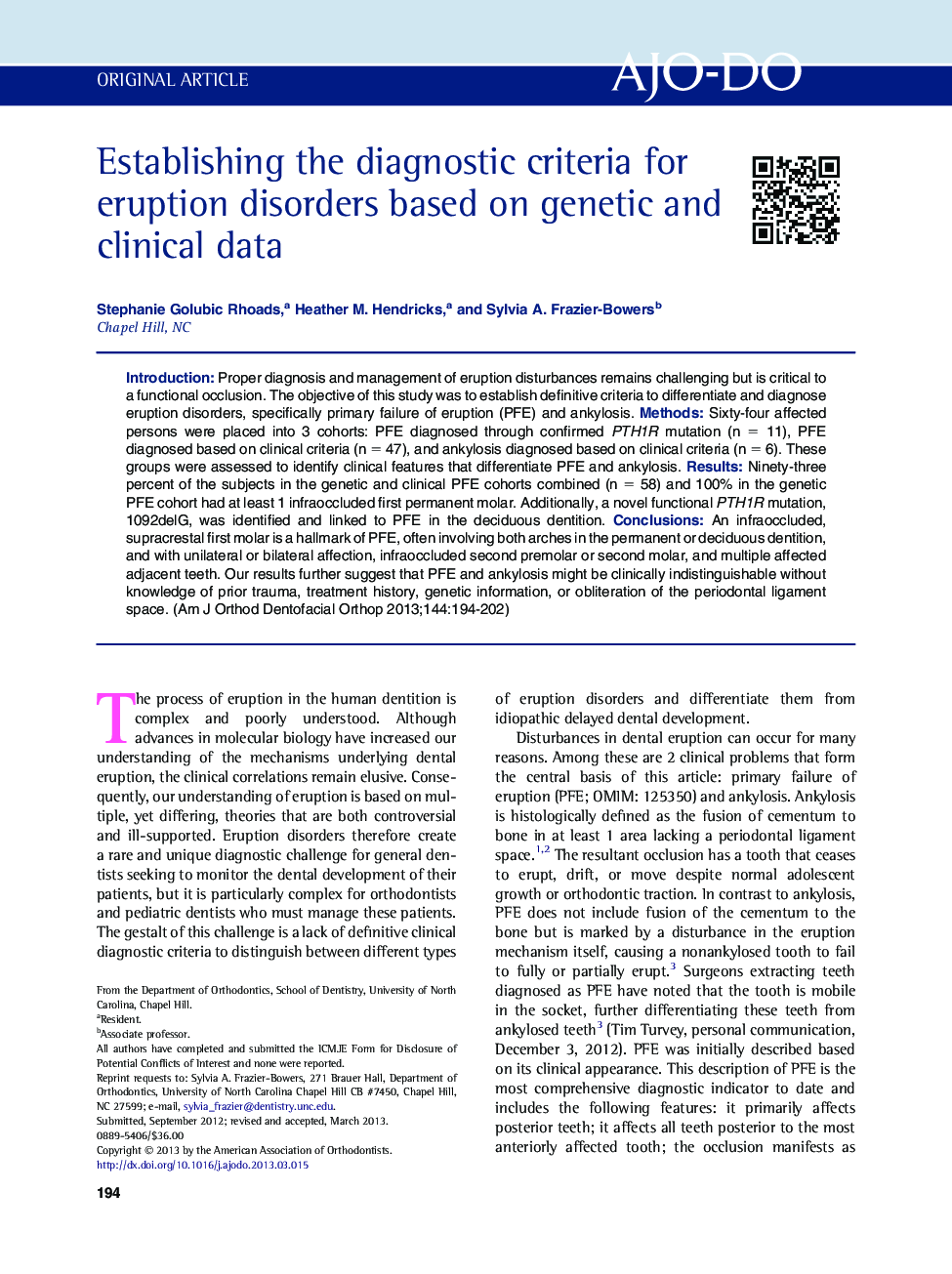| Article ID | Journal | Published Year | Pages | File Type |
|---|---|---|---|---|
| 3116043 | American Journal of Orthodontics and Dentofacial Orthopedics | 2013 | 9 Pages |
IntroductionProper diagnosis and management of eruption disturbances remains challenging but is critical to a functional occlusion. The objective of this study was to establish definitive criteria to differentiate and diagnose eruption disorders, specifically primary failure of eruption (PFE) and ankylosis.MethodsSixty-four affected persons were placed into 3 cohorts: PFE diagnosed through confirmed PTH1R mutation (n = 11), PFE diagnosed based on clinical criteria (n = 47), and ankylosis diagnosed based on clinical criteria (n = 6). These groups were assessed to identify clinical features that differentiate PFE and ankylosis.ResultsNinety-three percent of the subjects in the genetic and clinical PFE cohorts combined (n = 58) and 100% in the genetic PFE cohort had at least 1 infraoccluded first permanent molar. Additionally, a novel functional PTH1R mutation, 1092delG, was identified and linked to PFE in the deciduous dentition.ConclusionsAn infraoccluded, supracrestal first molar is a hallmark of PFE, often involving both arches in the permanent or deciduous dentition, and with unilateral or bilateral affection, infraoccluded second premolar or second molar, and multiple affected adjacent teeth. Our results further suggest that PFE and ankylosis might be clinically indistinguishable without knowledge of prior trauma, treatment history, genetic information, or obliteration of the periodontal ligament space.
